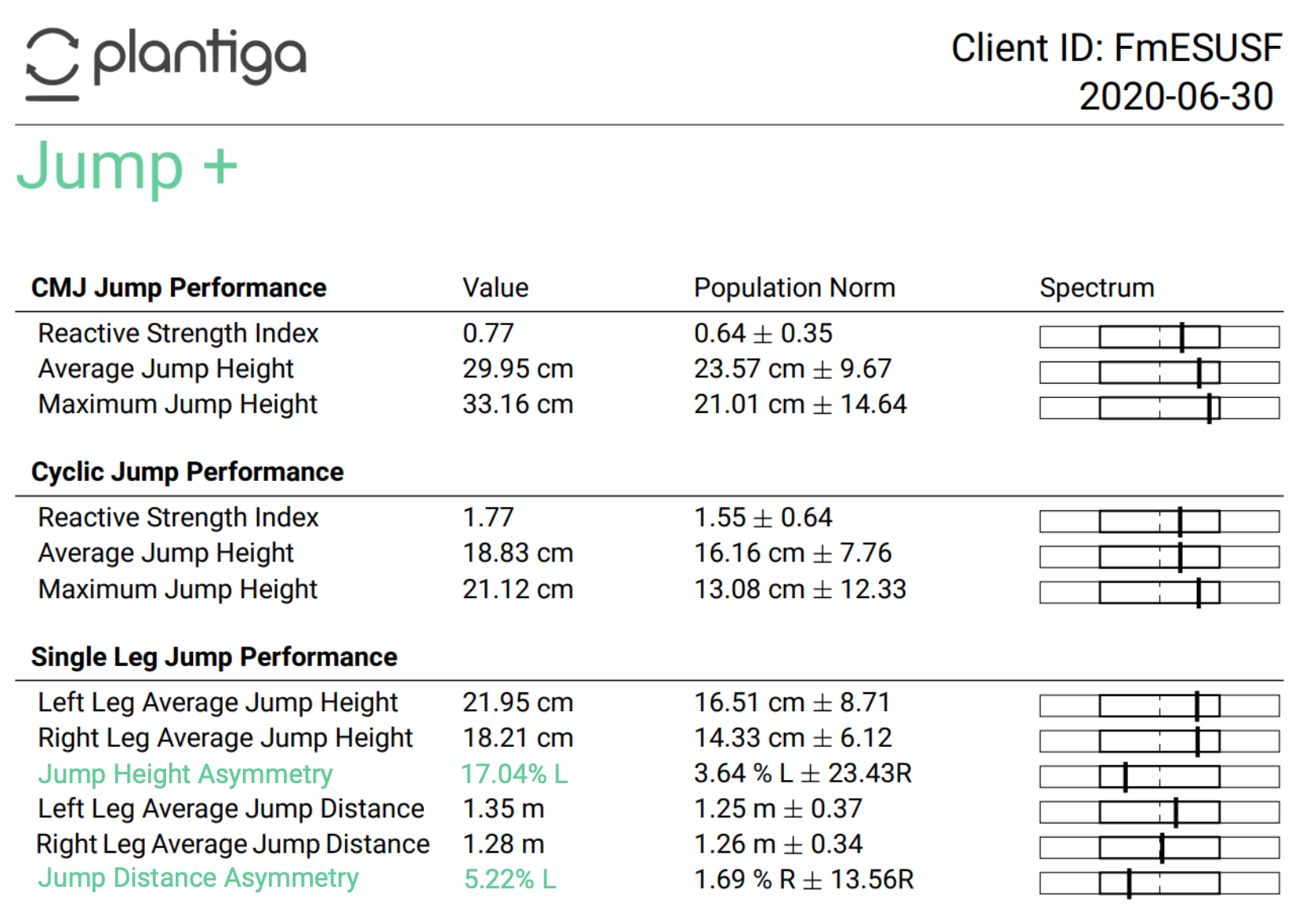Emma is a female collegiate level athlete who tore her right ACL and is rehabilitating through a standard physiotherapy program after reconstruction. She is using Plantiga insoles to track her progress and return to her pre-injury strength and performance levels. This case study highlights the shortcomings of current clinical RTP evaluation methods.

Single Leg Jump (SLJ) Tests
10 months after her surgery, Emma is performing single leg jumps for height and distance to help evaluate her limb symmetry so that she can be cleared for Return To Play (RTP).
- SLJ for Distance - Emma’s Jump Distance Asymmetry of 5.22% gives her a Limb Symmetry Index (LSI) of 94.78%. If this metric alone were to be considered in the RTP decision making process, she would be deemed fit for sport, as her LSI is greater than 90%.
- SLJ for Height - Emma’s Jump Height Asymmetry of 17.04% gives her a Limb Symmetry Index (LSI) of 82.96%, which is below the 90% requirement for RTP. Therefore Emma still has significant imbalances, particularly in her quadriceps, that need to be corrected before she is safe to return to her sport.
Summary
The discrepancy in LSI between SLJ for Height and Distance emphasizes the need for different evaluation methods in the clinic. Due to the difficulty of accurately measuring jump height without equipment like force plates or Plantiga, many physiotherapists rely on SLJ for Distance when making RTP decisions. However, as shown here, that may not be an accurate representation of an athlete’s recovery status because of the different muscle complexes that each type of jump uses. A quadriceps imbalance may not show as prominently in SLJ for Distance, leading to a false sense of security and putting athletes who are not ready out into the field.
Did this answer your question?.png?height=120&name=Plantiga%20lockup%20black%20(1).png)